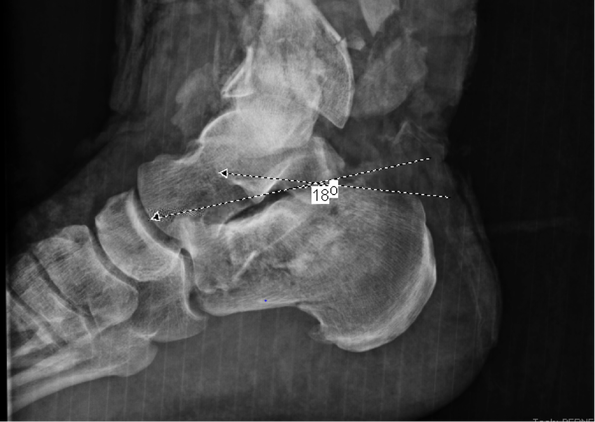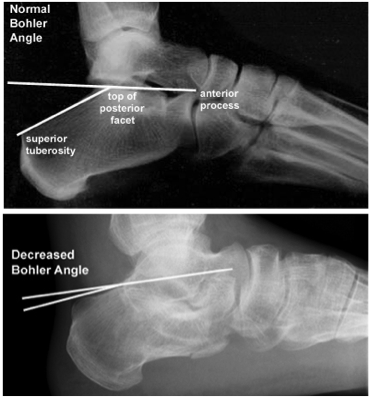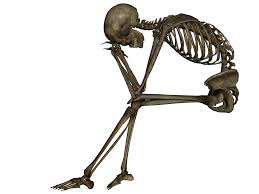|
Case: 27 year old Male s/p MVC with multiple open RLE fractures. Complains of severe pain at the BL ankles, unwilling to allow any further testing in the trauma bay. Plain films of single ankle below:  Calcaneal Fractures: - Mechanism: Generally result from an axial load to the lower extremity. Typically either a fall from height while landing on one’s feet –or- from an MVC. - Presentation: Patients may have a shortened and widened heel with varus deformity. Patients also may have “Mondor’s sign” which is ecchymoses of the foot extending into the heel. Diagnosis:
CT Scans:
Classification: There are multiple levels of classification, but the most important delineation is between intra-articular and extra-articular fractures.
As stated before -> Calcaneal fractures are associated with significant axial load so always consider other injuries including hip/pelvis, or lumbar spine fractures.
Treatment: o For most extra-articular and type I intra-articular fractures: Immobilization with short-leg splint, strict non weight-bearing status, elevation, pain control. Patient will need ortho follow-up ASAP. o For more severe fractures: Surgical fixation, if pursued, will vary depending on the patient’s comorbidities and the preference of the surgeon. Important complications: o Poor wound healing (particularly in smokers and diabetics) o Compartment syndrome o Arthritis
0 Comments
Your comment will be posted after it is approved.
Leave a Reply. |
Orthopedics BlogAuthorCMC ER Residents Archives
June 2018
Categories
All
Disclaimer: All images and x-rays included on this blog are the sole property of CMC EM Residency and cannot be used or reproduced without written permission. Patient identifiers have been redacted/changed or patient consent has been obtained. Information contained in this blog is the opinion of the author and application of material contained in this blog is at the discretion of the practitioner to verify for accuracy.
|




 RSS Feed
RSS Feed
